Culture & Lifestyle
Sā Pāru: A look into its past and driving faith
The festival has been one of the most important cultural events in the Newa community for centuries. There is no unanimity on how it originated though.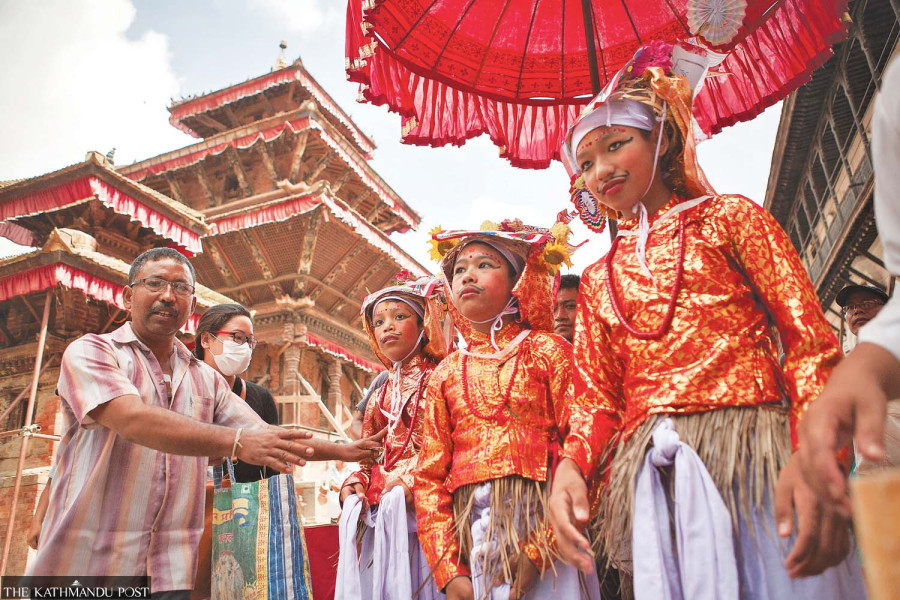
Ayush Gurung & Manushree Mahat
Thirty-five-year-old Niroj Maharjan is dealing with an irrevocable loss. He lost his father last year and as a part of his community’s ritual to honour the deceased, he readied himself at the crack of dawn last Friday to join the Sā Pāru celebrations in his neighbourhood.
Dressed in dhoti with a lathi in hand and a white cloth bag, Maharjan left his house to become a part of the Sā Pāru procession.
Maharjan, a resident of Godavari Municipality, Lalitpur, joined others like him remembering the family members they lost in the past year collecting alms and paying homage to the dead.
Sā Pāru or Gai Jatra as it is widely known today, is an integral part of the Hindu Newa community in Nepal, cultural experts say. People from the Newa community celebrate Sā Pāru to pay tribute to the family members who passed away in the past year. They believe that praying for the departed soul ensures their safe journey to the heavenly abode.
“Members of the bereaved family, mostly male members, take part in a procession that moves through a predefined path called the Sā Lā (the path of the cow) in and around the Durbar Square and temples in the vicinity. As the procession passes by, onlookers donate food and gifts in cash and kind to the participants,” Deepesh Raj Sharma, cultural expert and Bhaktapur Tourism Development Board president, told the Post.
The festival is observed on the first day of the waxing moon of Gunla—the tenth month of the Nepal Sambat lunar calendar which usually falls in the last month of August or the first week of September in the Gregorian calendar. However, the exact date for Sā Pāru celebrations remains debated, according to Kumar Ranjit, an academician of Kathmandu’s cultural heritage.
“There’s a standing debate among Hindu astrologers to agree on the rise and set of a new moon leading to Sā Pāru being celebrated on different dates every year,” said Ranjit.
This year, Bhaktapur locals observed the festival on August 31, while those in Kathmandu and Lalitpur celebrated on September 1.

While Sā Pāru is celebrated yearly in Nepal by a vast majority of the Newa population with the government declaring a public holiday on the day of the celebrations, the origin of the festival has several facets with each Newa sub-community adhering to different notions of the festival’s origin.
In Kathmandu, locals believe that King Pratap Malla, the eighth king of Kantipur—modern day Kathmandu, organised the grand festival in an attempt to console his mourning Queen, grieving the loss of their son; however, historians and academicians say there is no evidence to back the claim.
According to Alok Siddhi Tuladhar, a culture and heritage documentarian, Sā Pāru, contrary to popular belief, precedes King Pratap Malla’s reign and the festival has been an integral part of the Newa community.
Sā Pāru is a portmanteau with two Newa words combined to create a new word. In Nepal bhasa, Sā means cow and Paru means the first day of a lunar month. The festival was originally observed by the people of Nepal Mandal—an area that spreads across modern-day Kathmandu Valley and its neighbouring areas.
“Sā Pāru or Sā Yā (ya means festival or journey) has always been an integral part of the Newa culture. Although its origin and importance today is masked with stories that bear little resemblance to the truth,” Tuladhar said.
According to Tuladhar, the festival took its original shape as a celebration of nature, its elements, and cows—central to the agrarian lifestyle of the people of Nepal Mandal.
Cows, among other cattle, were important to the farmers not just for their milk, but for their dung, which was used as fertiliser and urine, which, after fermentation, worked as a pesticide, Tuladhar added.
“Pratap Malla was the king of Kantipur only. Had he been the initiator of Sā Pāru, rival kingdoms like Bhaktapur and Lalitpur would have boycotted the festival. Instead, Bhaktapur celebrates the festival in the grandest way,” Tuladhar told the Post.
What the Malla king did though was add humour to the celebrations. The king mandated the procession to pass through the Hanuman Dhoka Palace, to show his mourning queen that there were others who were going through similar grief. After attempts to console the grieving queen failed, the king announced rewards for anyone who would succeed in making her laugh. It was then the locals started donning exaggerated costumes, painted faces, ridiculing leaders and social injustices in their attempt to make the queen happy.
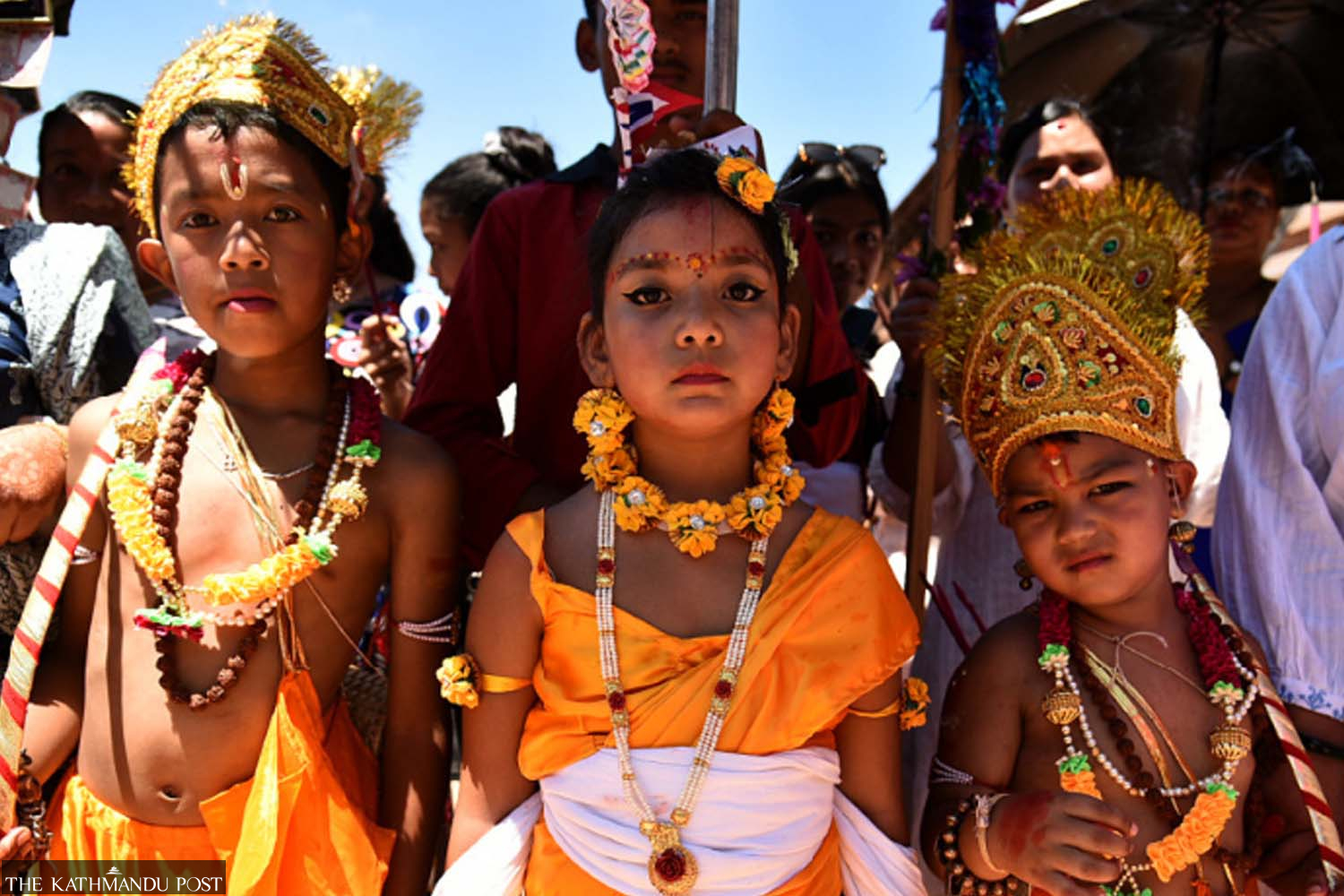
According to cultural historians, the annual parade also served as a census. The procession would pass through the Hanuman Dhoka premises, where the king’s courtiers would be stationed. They would then count the number of attendees, which was taken as an annual mortality census.
Meanwhile in Bhaktapur, another version of the festival’s origin claims that it was King Jayasthiti Malla of Bhaktapur who started the festival, Sharma shared.
The Newa community in Kathmandu, Bhaktapur and Lalitpur districts of the Kathmandu Valley celebrate Sā Pāru with slight differences in rituals and the representative animals they use.
Ranjit, the academician, explains that the locals used whatever was at their disposal at the time to mark the occasion resulting in certain variations in the celebrations in the three districts of the Valley.
“The locals offered whatever was accessible to them to pay respect to the deceased. Bhaktapur, which was a hub for pottery and sculpture, paraded sculptures of bulls,” said Ranjit.
In Bhaktapur, Sā Pāru is observed with members of the bereaved family, parading the town square with a makeshift chariot called ‘Sā’ or carts with a sculpture of the Nandi, the mythological bull, the mount of Lord Shiva.
Traditionally, the chariots, symbolising a cow, would be decorated with yak tails, pictures of deities and the deceased, cloth to signify the body, and topped with nyā:ku (sticks representing horns) and lotus leaves instead of umbrellas as used today. “If the deceased is a woman then her representative chariot is wrapped in sarees, while those of men are wrapped with plain white cloth,” shared Sharma.
The procession is led by musicians playing lala khin (a madal-like newa instrument) and jhyali while dancers move to their tunes.
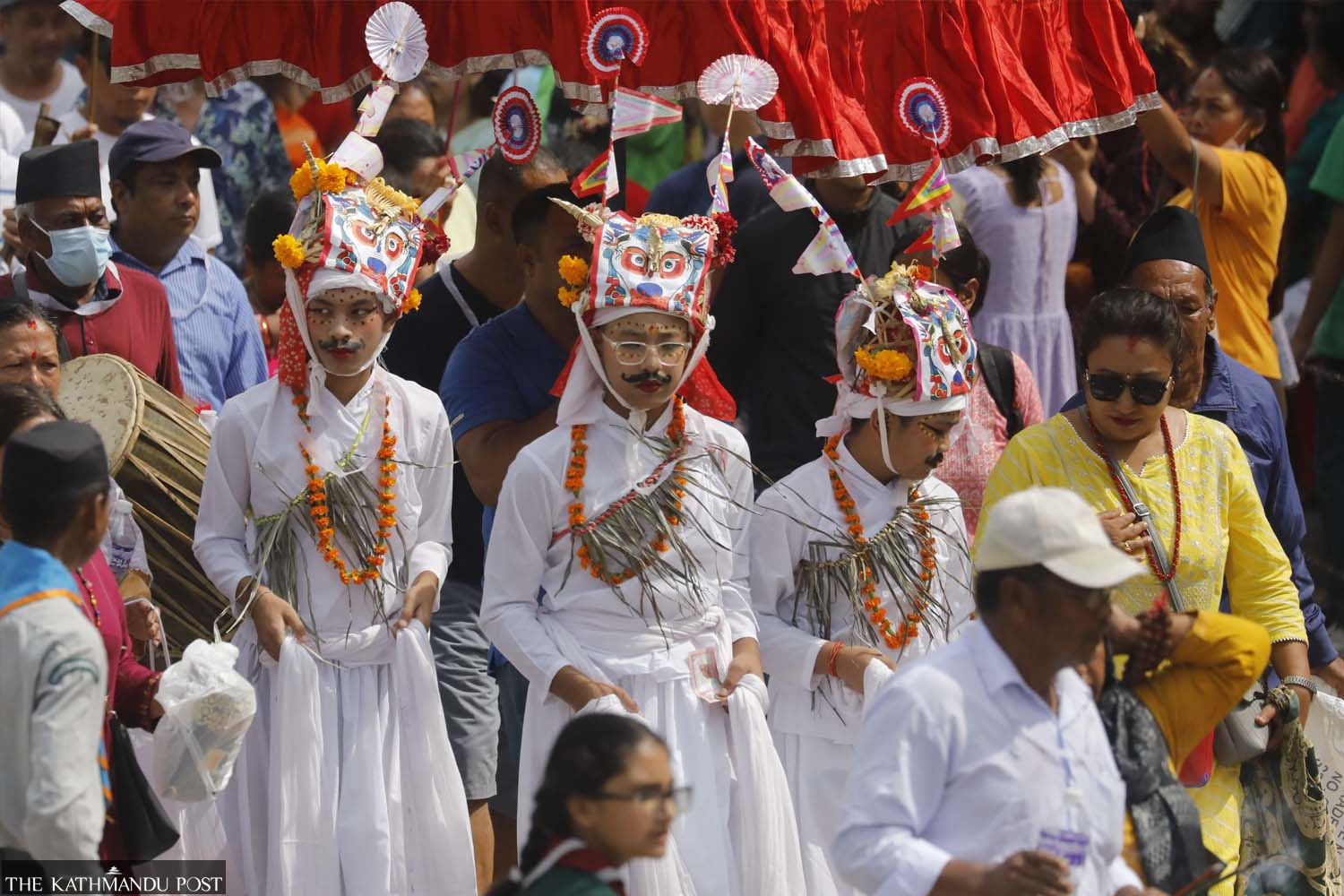
Ramita Nayabha, a 45-year-old local of Suryabinayak in Bhaktapur, shares that the streets of the city are filled with the liveliness of ‘Ghintang Ghisi’—a traditional Newa rhythmic music—every year during the festival.
“Our entire neighbourhood is filled with the din of excited locals dancing to the beat of Ghintang Ghisi. Their enthusiasm is contagious—even those of us not directly involved in the festivities are easily drawn to the lively spectacle,” Nayabha shared.
At the end of the procession, a straw-wrapped chariot representing lord Bhairav is paraded, signifying the end of the rally. The family members then take the chariot home, dismantle it and immerse the bamboo pillars of the chariot in a nearby river.
Lalitpur, on the other hand, observes Mataya Jatra wherein locals join the procession of musicians roaming the streets.
“Here in Thecho, we have a Baja Samrakshan Samiti (Musical Instruments Conservation Committee) that represents 12 different instruments to play during Mataya Jatra. Different groups and members of the community show their dances, and enjoy the festival,” said Ichchha Maharjan, a member of the Baja Samrakshan Samiti.
Similarly, in Kathmandu, a male member of the bereaved family wears a costume, and headgear and paints his face to resemble a cow. “The parade traverses through their own set path. However, each participant, in and around the core Newa settlement, must pass through the Hanuman Dhoka Palace gate,” said Tuladhar.
“It’s usually men who take part in the parade. If a woman wants to participate, she dresses up as Radha, Krishna’s companion, accompanied by a boy representing baby Krishna,” Sharma added.
That Sā Pāru has become popular as Gai Jatra in Kathmandu Valley is a testament to the fluid nature of the festival. Over the centuries, the festival has adopted several different meanings and equally diverse ways of celebration.
Pride parades, which are exclusively celebrated throughout the world in the month of June, have also become a crucial part of the Gai Jatra celebration in the capital. Since 2002, the Blue Diamond Society has been hosting the Gai Jatra pride parade, which saw its continuation this year as well.
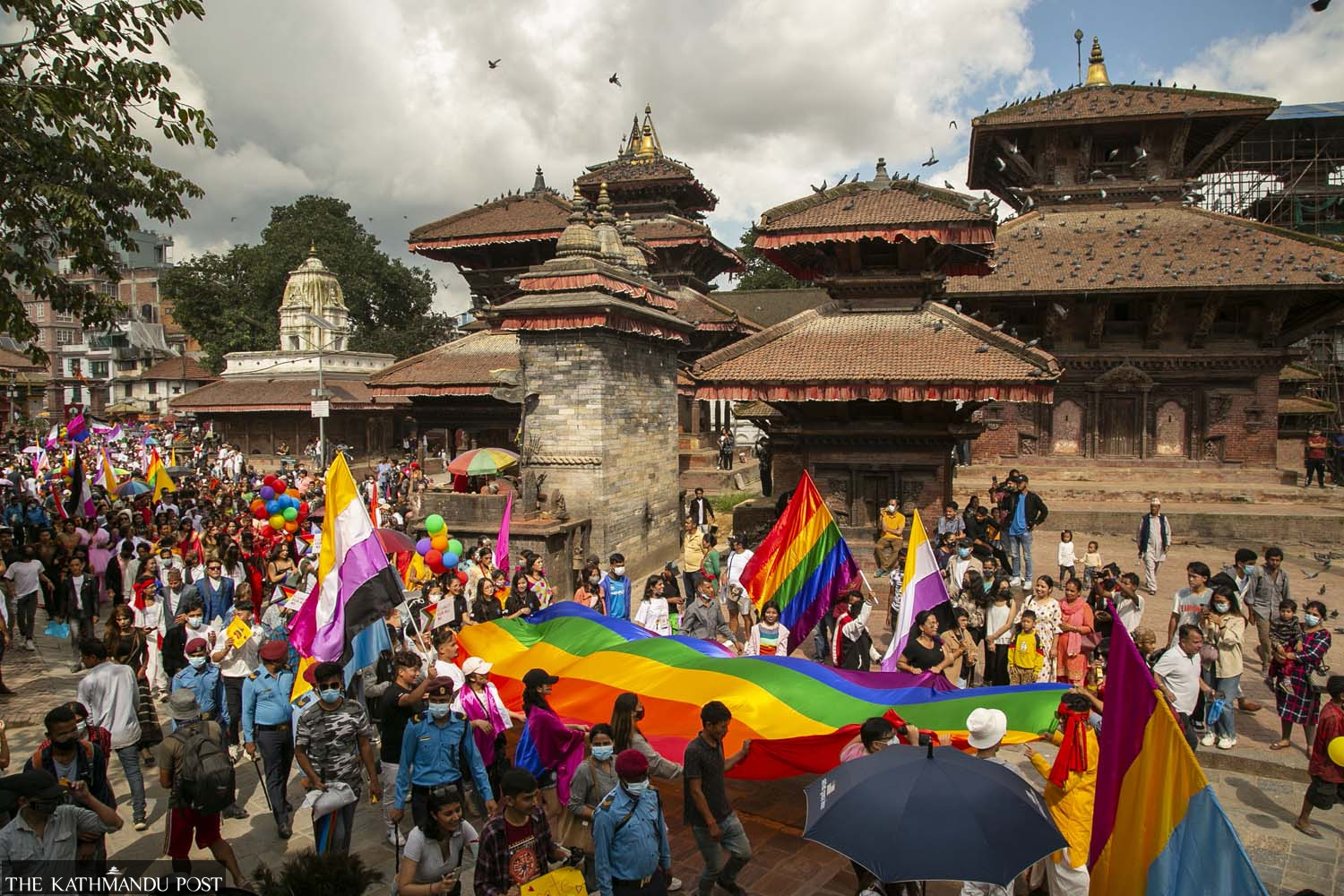
Thirty-five-year-old Bhumika Shrestha, programme manager at Blue Diamond Society, shares that the Gai Jatra pride parade is an opportunity for members of the LGBTQ+ to openly express themselves in a society where acceptance of queer identities is still a problem. During this parade, objection from family members and society is also minimal as fluid gender expression is a part of the Gai Jatra celebration, says Shrestha.
“The members of the LGBTQ+ community who’ve been held back by society from fully expressing themselves find a safe and welcoming space amongst the queer community marching the parade during the Gai Jatra celebration,” says Shrestha.
Twenty-year-old Babu Dumi Rai, a member of CruiseAids Nepal—an organisation that provides counselling services on HIV/AIDS, has noticed increasing participation in the pride parade as someone who has been actively attending them for the past five years. He expresses that this pride parade is an exciting event for the members of the LGBTQ+ community to come together in solidarity in a proud display and celebration of acceptance.
“We want to incorporate culture as part of pride to encourage and spread LGBTQ+ acceptance far and wide in society. With the inclusion of pride in the already grand and religiously-grounded festival of Gai Jatra, the members of the community are uplifted to feel happy as who they are,” said Rai.
Going back to the roots of the festival, Ranjit said, “The festival today carries different meanings for different people. For me and most members of the Newa community, the festival serves as a reminder that death is a natural process that eventually everyone will be a part of.”
For Maharjan, who lost his father last year, participating in this year’s Sā Pāru provided closure. “I took this opportunity to bid farewell to my father, wishing him well in his journey onward,” he said.




 14.12°C Kathmandu
14.12°C Kathmandu


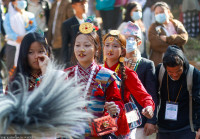
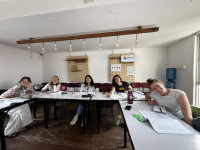


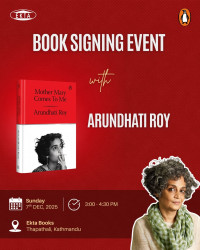


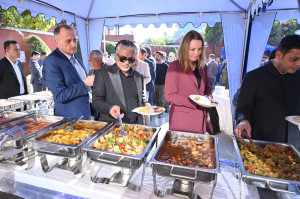




%20(1).jpg&w=300&height=200)

